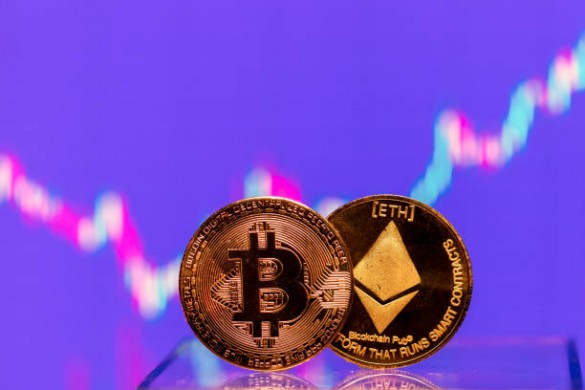Back in 2017, Tom Lee was one of the few voices on Wall Street urging investors to treat Bitcoin as digital gold. At the time, Bitcoin hovered around $1,000 and was dismissed as a fad, but Lee’s call eventually proved prescient.

Now, he’s making an even bolder bet—this time on Ethereum.
As Chairman of Bitmine Immersion Technologies, Lee is leading a strategy that could reshape how Wall Street views crypto. In its first month, Bitmine acquired 833,000 ETH, aiming to eventually control 5% of Ethereum’s total supply—a position worth about $20 billion at today’s prices.
According to Lee, this isn’t just about hoarding crypto. It’s about treating Ethereum like critical infrastructure.
Why Ethereum, Not Just Bitcoin?
Lee still believes Bitcoin could reach $1 million, but he sees Ethereum as something different: the backbone of a new financial system.
While Bitcoin represents “digital gold,” Ethereum is where the banking, settlement, and tokenization layers are being built. From stablecoin regulation to JPMorgan’s blockchain integrations and Coinbase’s tokenization platform, the infrastructure is overwhelmingly Ethereum-based.
Unlike Bitcoin, Ethereum also brings a set of unique value drivers for institutions:
Native yield—Staking offers ~3% annual rewards without selling the underlying asset.
Scarcity—If Bitmine controls 5% of supply, that’s 5% less circulating.
Velocity—Bitmine is accumulating ETH faster than MicroStrategy stacked BTC.
Liquidity—With daily trading volumes rivaling companies like Uber, ETH offers deep markets for raising and deploying capital.
Integration—Validators can directly plug into Ethereum’s settlement layer, capturing fees from services like oracles, sequencers, and hosting.
Put simply: holding ETH isn’t just “buy and hold.” It’s participating in—and profiting from—the infrastructure of a new financial era.
The Case for Re-Pricing Ethereum
Lee sees Ethereum today as Bitcoin in 2017—misunderstood and undervalued. His targets:
$4,000—a return to December’s highs.
$6,000—fair value relative to Bitcoin.
$7,000–$15,000—realistic in the next 12–18 months if institutional adoption accelerates.
History suggests he might be right. Wall Street has repeatedly mispriced transformative assets:
Amazon was once dismissed as just a bookstore.
Tesla was modeled like a niche automaker.
Even gold took years after the U.S. left the gold standard to be treated as a true monetary hedge.
Ethereum, Lee argues, is going through the same phase of misunderstanding before mainstream recognition.
From “Hot Narratives” to Infrastructure
The real shift comes in how institutions might begin to value Ethereum. Instead of asking, “What’s the narrative today?”, the question becomes:
How much of the network’s productive capacity do you control?
What yield does it generate?
How fast can your share grow?
How liquid is your position?

Source: create.vista.com
That’s how Wall Street values pipelines, power grids, and telecom networks—scarce, income-generating infrastructure that is difficult to replace.
Seen this way, Ethereum becomes the settlement layer of the digital economy, with other blockchains and projects acting as complementary rails, utilities, and endpoints.
The Bottom Line
Ethereum is no longer just a platform for smart contracts or decentralized apps—it’s becoming the infrastructure layer Wall Street itself is starting to build on.
If Lee’s $20 billion bet pays off, it could mark the beginning of a massive institutional re-rating of Ethereum, similar to what happened with uranium, lithium, and even gold in past cycles.
In short: Ethereum may be on the cusp of graduating from a “crypto asset” to a critical global asset class.
Learn from market wizards: Books to take your trading to the next

 Hot Features
Hot Features












